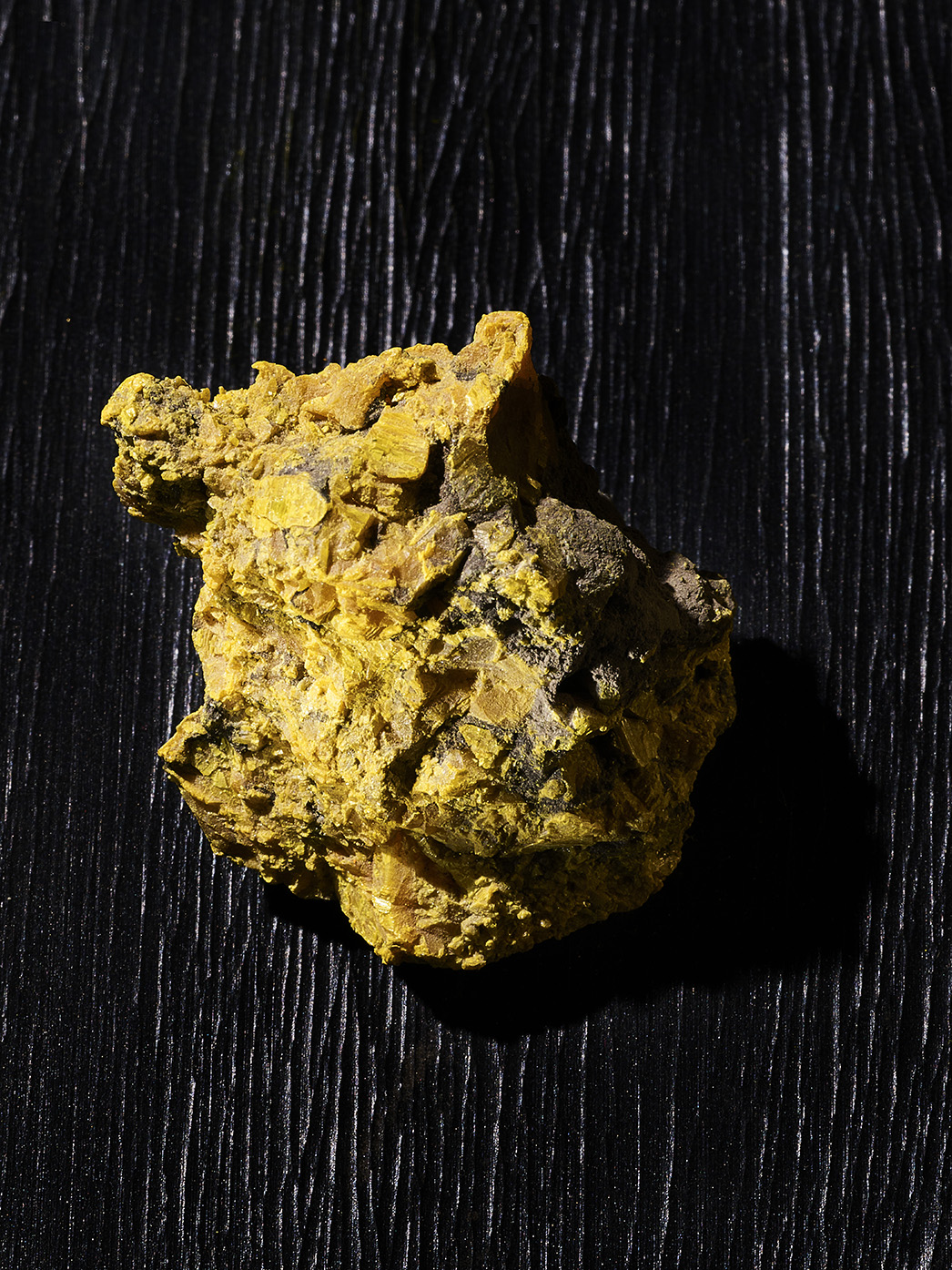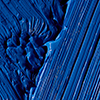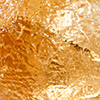Orpiment pigment

ORPIMENT WAS THE CLOSEST IMITATION TO GOLD.
Its Latin name is auripigmentum (gold paint) and in the classical world, it was believed that this resemblance had deeper alchemical roots. It was even said that the Roman emperor Caligula could extract gold from the mineral.
In fact, orpiment carries a much more dangerous substance.
It is a highly toxic sulphide of arsenic. The Persian word zarnikh (gold-coloured) became arsenikon in Greek and then arrhenicum in Latin, from which the English word ‘arsenic’ is derived. The Romans were well aware of orpiment’s poisonous nature and used slave labour to mine it. For the unlucky slaves this was, in essence, a death sentence.
Orpiment was used in Ancient Egypt as a cosmetic, taking
its place in history alongside other deadly pigments used in makeup. It was used in painting for centuries throughout Persia and Asia, but in Europe, because of the dominance of lead-based yellows, it was most often employed in manuscripts.
A manufactured version, known as king’s yellow, was available from the 17th century. The name is believed to come from Arabic alchemy, which described orpiment and realgar as the ‘two kings’.
Both the naturally occurring and synthetic versions of orpiment were incompatible with other commonly used pigments, particularly lead-based pigments like flake white, and copper-based pigments like verdigris and malachite.
It was infamous for turning them black. With the introduction in the 19th century of the more chemically inert and less toxic cadmium yellow, orpiment fell out of usage.




